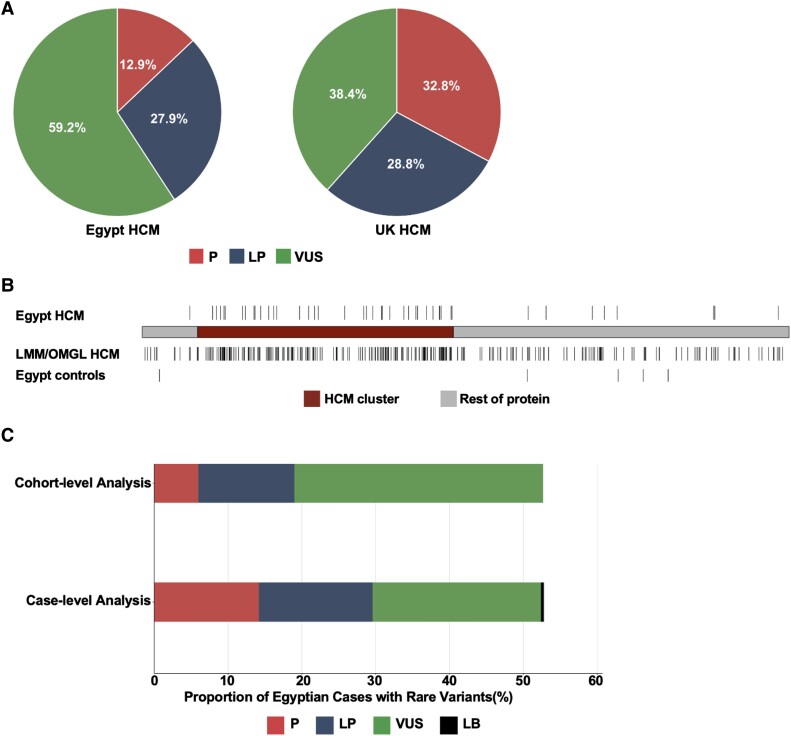Figure 2.
Incorporation of methods that compare frequencies between Egyptian patients and controls increases the yield of clinically actionable variants observed in the understudied population. (A) For patients with rare variants in validated hypertrophic cardiomyopathy genes, the distribution of rare variants by variant classification (pathogenic, likely pathogenic, and variant of uncertain significance) is shown. For patients with multiple hits (see Supplementary material online, Tables S8 and S9), the variant with the highest pathogenicity was prioritized (i.e. pathogenic then likely pathogenic then variant of uncertain significance). The proportion of variants of uncertain significance was significantly higher in Egypt hypertrophic cardiomyopathy patients vs. UK (59.2% vs. 38.4%, P = 1.6 × 10−5). (B) Similar distribution of rare, missense MYH7 variants between the Egypt- and large-scale hypertrophic cardiomyopathy cohort of majority European ancestry (Partners Laboratory of Molecular Medicine and Oxford Medical Genetics Laboratory, n = 6112) in the predefined hypertrophic cardiomyopathy cluster (red) (residues 167–931). Rare variants in the hypertrophic cardiomyopathy cluster were enriched in the Egypt hypertrophic cardiomyopathy cohort over Egypt controls with an etiological fraction of 0.99. (C) Application of modified variant interpretation guidelines increases the proportion of Egypt hypertrophic cardiomyopathy patients with clinically actionable variants from 19% to 29.6%. Rare variants were initially classified based on the standard American College of Medical Genetics and Genomics/Association for Molecular Pathology guidelines (initial analysis) and then reclassified after integrating ancestry-matched controls into the analysis (cohort-informed analysis). HCM, hypertrophic cardiomyopathy; P, pathogenic; LP, likely pathogenic; VUS, variant of uncertain significance; LMM/OMGL, Partners Laboratory of Molecular Medicine and Oxford Medical Genetics Laboratory; LB, likely benign.

